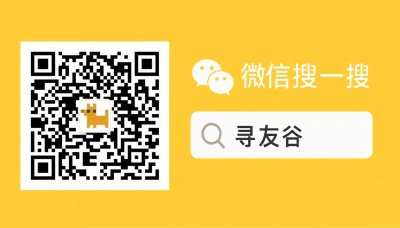Why Americans care: the scene, the problem, and the reality
Last week I was at a small noodle shop in Changsha — early evening, lights low, pockets full of exactly zero cash. The owner smiled, pointed to a tiny QR code propped by the counter, and said the only thing I needed to pay was my phone. That’s China: you either speak WeChat Pay (and Alipay) or you sit hungry and admire other people’s dumplings.
For Americans living in or about to arrive in China — whether working remotely, doing a Fulbright, or arriving as an international student — WeChat Pay isn’t a novelty. It’s a gatekeeper to daily life: groceries, bike rides, campus cafeterias, utility payments, even some government services that accept mobile wallets. Problem is, linking a U.S. bank card or using a U.S. phone number doesn’t always behave the same way as a local setup. Limits, verification steps, and odd app behaviour make the process feel like a bureaucratic scavenger hunt.
Add a few global policy tremors — travel and visa changes that affect how long you stay or what documents you need — and the white-knuckle urgency grows. China extended some visa-free arrangements into late 2026 and added ports in the Greater Bay Area for transit facilitation, which means more Americans will be passing through and wanting a quick pay option rather than standing in a currency exchange line [Source, 2025-11-03]. Meanwhile, transit and port expansions (like the mega bridge and fast-rail stations added to visa-free lists) make WeChat Pay even more relevant for short-term visitors who want the convenience of mobile payments without a fully local banking setup [Source, 2025-11-03].
This guide is for you — Americans and international students — who need practical, streetwise steps to make WeChat Pay work reliably. We’ll cover setup, common traps (especially with foreign cards), limits, scams to watch for, and how visa and travel policy shifts can change what you need to prepare.
How WeChat Pay works for U.S. people: setup, verification, and real limits
WeChat Pay is a China-native mobile wallet built into the WeChat app. In practice there are three common states you’ll meet as a U.S. user:
- Basic QR paying with a linked foreign card (limited): you can often scan store QR codes and attempt payment, but transactions may be limited or declined depending on the merchant’s acquiring bank and whether the card supports RMB settlement.
- Full verified WeChat Pay with a Chinese bank account or a supported foreign-card integration: this unlocks all features — transfer to other WeChat users, recharge, pay utilities, and use merchant mini-programs.
- Cross-border QuickPay (passport/card combo): some non-residents use WeChat’s cross-border services that accept foreign cards for specific purchases; coverage is partial and fluctuates.
Practical setup steps
- Install WeChat (keep the app updated; domestic versions differ from international sometimes).
- Open Me → Wallet. Try to add a bank card. If it asks for a Chinese ID number, you’re in the local linking flow and may need a local bank account.
- For foreign cards, choose “Add Card” and enter your U.S. card details. If accepted, you’ll likely be on a cross-border flow with tighter daily/monthly limits.
- Complete any SMS or 3D Secure verification your card issues. If your phone is a non-China SIM, you’ll still receive the SMS/OTP in most cases if roaming is enabled or you have an international number that receives messages.
- For full functionality, open a Chinese bank account (e.g., ICBC, BOC, CCB, or a local city bank) and link it to WeChat Wallet. That requires passport + visa + local phone number + bank branch visit and is the most reliable long-term solution.
Real limits and gotchas
- Cross-border payments often have lower limits and sometimes higher failure rates for small merchants who explicitly require a local settlement method.
- Some campus systems or government kiosks expect a Chinese bank-linked WeChat Pay. In those cases your foreign card won’t work.
- If your stay is short and covered by visa-free entry or transit (news shows China expanded visa-free ports into late 2026), you might want to plan for short-term alternatives: cash, international cards at bigger stores, or ask for Alipay/WeChat cross-border QR options [Source, 2025-11-03].
Banking vs. cross-border card: pros and cons
- Linked Chinese bank account: pro — full access, higher transfer limits, you can receive red packets (hongbao), pay utilities and school bills; con — requires time to open account and presence at a branch.
- Foreign card (cross-border): pro — quick to try, no branch visit; con — limited features, some failures at local merchants, and higher decline risk.
Real-life tactics Americans use (streetwise but legal)
- Campus shortcut: international student centers often maintain a quick payment workaround — ask them. Universities are increasingly encouraged to attract international students and smooth campus life logistics, so student services might pre-arrange payment channels or guidance for wallets.
- Use a middle-person with a local account for large one-off payments (rent deposit, agent fees) but do it transparently and get receipts.
- Keep small stash of cash for taxis, small markets, or rural visits where QR terminals act funky.
- For arrivals at major hubs: use official transit e-pay kiosks at visa-free ports and big airports; they tend to accept international cards more reliably than tiny street vendors [Source, 2025-11-03].
Systemic context: policy wind and global labor moves China’s moves to open up visa arrangements and facilitate travel make mobile payments more relevant for transient visitors. At the same time, global shifts in immigration policy (for example, proposals in the U.S. that affect H-1B fees and the flow of international talent) can change why and how long Americans come to China — and whether they bother opening local bank accounts or relying on cross-border cards [Source, 2025-11-03]. If U.S. work visas become more expensive or restrictive, shorter, study-focused trips or tourism may grow — and with them, demand for quick, cross-border payment options.
🙋 Frequently Asked Questions (FAQ)
Q1: Can I use my U.S. debit or credit card to pay with WeChat Pay?
A1: Yes — sometimes. Steps to try:
- Open WeChat → Me → Wallet → Add a Card.
- Enter your card details and complete SMS or 3D Secure verification.
- Test with a small payment in a reliable merchant (e.g., Starbucks, major supermarket). If it fails:
- Try a different card (Visa/Mastercard often work better than some network-specific cards).
- Ask merchant if they accept “cross-border WeChat Pay.” If they don’t, you’ll need cash or a local bank-linked wallet.
Q2: I’m an international student arriving for a one-year program. Should I open a Chinese bank account for WeChat Pay?
A2: Short answer: yes, if you plan to stay longer than one semester or want zero friction. Roadmap:
- Bring passport, visa, and proof of residence (university dorm contract or landlord).
- Visit a major bank branch (ICBC, Bank of China, China Construction Bank) with a Chinese-speaking friend or campus liaison.
- Register local SIM and set up a Chinese mobile number — banks often require it.
- Open the account, link it to WeChat Wallet, and set a payment PIN. Benefits:
- Higher transfer limits, local bill pay, easy rent and campus payments.
- Ability to top up student metro cards and use campus services.
Q3: What are the fraud and safety risks, and how do I protect myself?
A3: Common risks: fake QR codes (redirecting to scammers), red packet scams, and social engineering. How to protect:
- Only scan official merchant QR codes — look for printed store logos or ask staff.
- Verify the recipient when transferring money; for strangers use WeChat Pay’s “scan to pay” rather than transferring via username.
- Enable WeChat wallet password and biometric lock (if available).
- Keep screenshots and receipts for big transactions.
- If scammed, gather evidence and report to local police (you’ll need receipts and WeChat transaction IDs) and notify your bank.
🧩 Conclusion
If you’re an American in China — short trip or long haul — WeChat Pay is both a convenience and an expectation. For short visits, try cross-border card linking and keep cash as a backup. For longer stays, open a local bank account and link it to WeChat for the smoothest life. Policy shifts like extended visa-free schemes and transport port expansions mean more Americans will be mobile across China; planning your payment setup before arrival saves stress at the noodle shop.
Quick checklist
- Try adding a U.S. card to WeChat Wallet on arrival; verify with a small payment.
- If staying >3 months, open a Chinese bank account and link it to WeChat.
- Keep small cash for rural vendors and taxis.
- Join a campus or city WeChat group (XunYouGu has ones for Americans) for on-the-ground tips.
📣 How to Join the Group
XunYouGu’s WeChat groups are built by people who’ve been there — students, expats, helpers. If you want real-time tips (where to top up cards, which bank branch speaks English, or who has spare SIMs), here’s how:
- On WeChat, search for the public account “xunyougu”.
- Follow the official account.
- Send a message with your city and short intro (example: “NYU student arriving Shanghai, need WeChat Pay tips”).
- Add the assistant’s WeChat through the account and request an invite to the relevant local group. We keep groups friendly, practical, and scam-free.
📚 Further Reading
🔸 China extends visa-free policy to end-2026, adds Sweden to scheme
🗞️ Source: Reuters – 📅 2025-11-03
🔗 Read Full Article
🔸 Mega bridge, fast-rail station to be visa-free ports
🗞️ Source: RTHK – 📅 2025-11-03
🔗 Read Full Article
🔸 Trump’s new visa plan could make H-1B talent too pricey for American companies
🗞️ Source: Economic Times – 📅 2025-11-03
🔗 Read Full Article
📌 Disclaimer
This article is based on public information, compiled and refined with the help of an AI assistant. It does not constitute legal, investment, immigration, or study-abroad advice. Please refer to official channels for final confirmation. If any inappropriate content was generated, it’s entirely the AI’s fault 😅 — please contact me for corrections.

